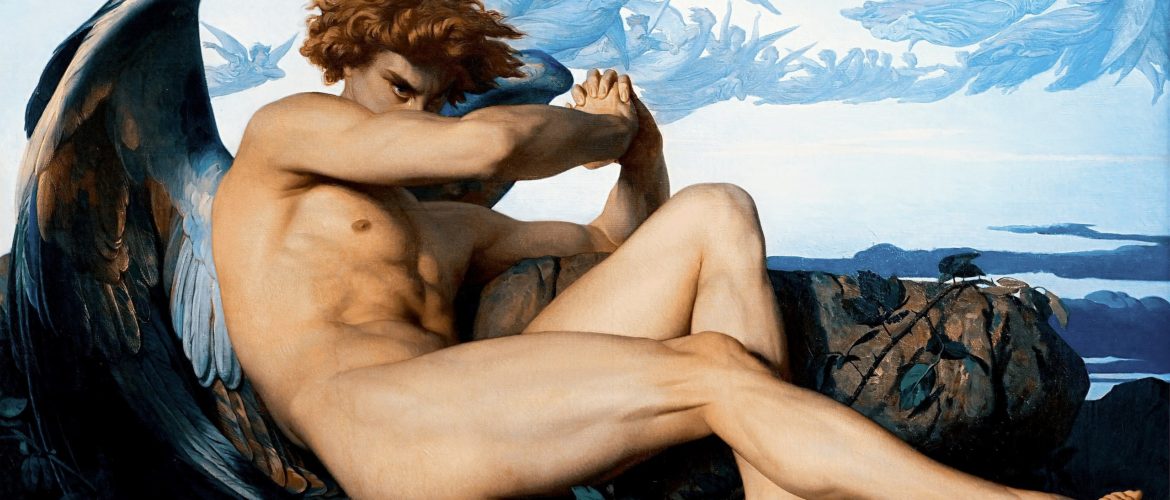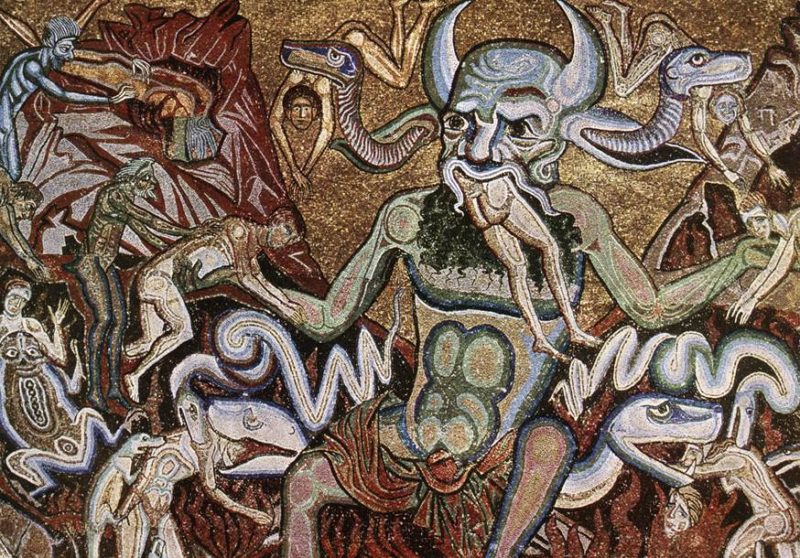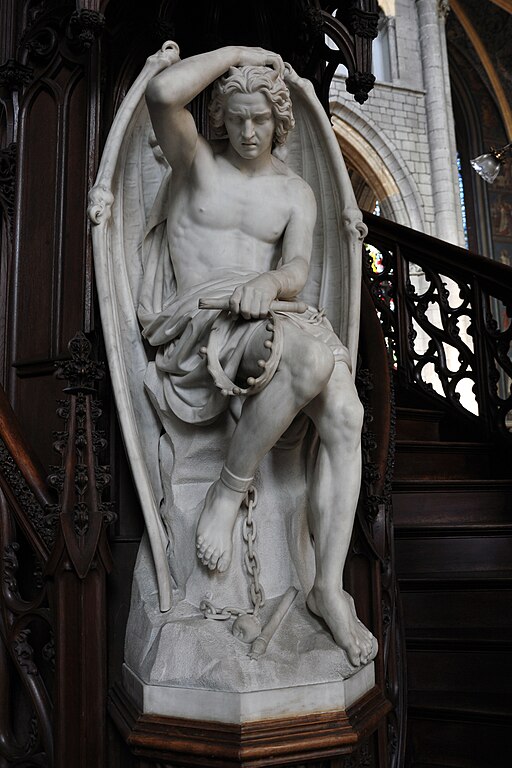The Evolution of the Depictions of Lucifer in Religious Art

Western religious art developed along with contemporary art trends, which coincided with changes in the way people interacted with faith and the world around them as a whole. Some early religious art can barely be called “art” by modern standards. For example, in Medieval Europe, where Christianity was the dominant religion, most artworks depicted Biblical scenes and characters. Back then, art was seen as a way to warn people against sinning and strengthen their faith, not as a mode of self-expression.
With the main function of religious art being to evoke fear, it is no wonder that Lucifer, or Satan, was always portrayed as a horrible half-beast half-human creature torturing souls or tempting living humans. However, something started to change as the Romantic era came along.
The Evolution of the Depictions of Lucifer in Religious Art
As the world became more and more secular, more artists felt free to explore religious subjects and reimagine them in their work. The difference in more modern depictions is striking: they are obviously much more realistic, with many of them picturing Lucifer in human-like form. One of the most famous images of the Devil was created by the French painter Alexandre Cabanel (featured image). The piece is called “The Fallen Angel” (1847), a name that is now often used synonymously with “demon.”
In Cabanel’s painting, we do not see a terrifying creature, but a man. However, the naturalism of this piece is not what makes it so incredible. It is the emotion that can be seen on Lucifer’s face — the sorrow and anger he feels after being cast out of Heaven. As he sits with his face almost completely hidden, we see a tear in the corner of his eye — the only thing betraying his emotions apart from his furrowed eyebrows and tense figure.
A sculpture created around the same time by the Belgian artist Joseph Geefs faced criticism from religious people for its portrayal of Lucifer. Geefs’ “L’ange du mal” (1842) did not evoke feelings of terror and hatred toward the Devil. Instead, it presented a solemn, elegant figure of a fallen angel. The sculpture was later replaced by another piece made by the artist’s brother for being too sensual and human.
The Romanticist fascination with the dark parts of the world translated into the religious art of the time. “Fallen Angels” occupied the minds of 19th-century artists and writers because they viewed the image of the Devil not only as the impersonation of all evil but also as a reflection of the inner conflict and struggle that all humans are familiar with.


